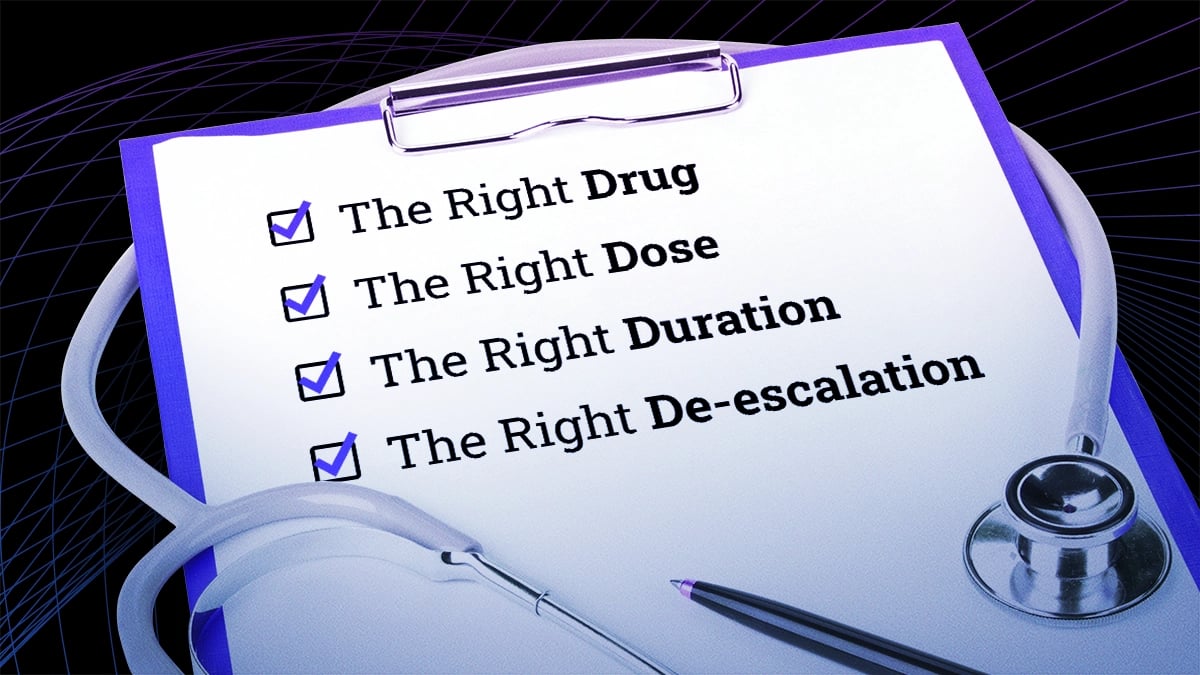Effective antimicrobial stewardship ensures that patients, both human and animal, receive the most effective treatment option. According to the Pew Charitable Trusts, this approach improves patient outcomes, saves money, and enables providers to prescribe the right drug at the right time for the right length of time.

Antimicrobial stewardship (AMS) refers to the responsibility shared by all healthcare providers and systems globally to administer antimicrobial drugs in ways that protect the long-term health of people, animals, and the planet. This effort most often focuses on antibiotic resistance, but antimicrobial drugs also include the broader group of drug agents that treat infection and sepsis, including antibiotics, antifungals, and antiseptics.
For decades now, AMS programs have been working to ensure the proper use of antimicrobials. A 2005 article on antimicrobial stewardship programs in U.S health care systems from Virginia Commonwealth University School of Pharmacy defines an antimicrobial stewardship program as “an ongoing effort by a health care institution to optimize antimicrobial use among hospitalized patients in order to improve patient outcomes, ensure cost-effective therapy, and reduce adverse sequelae of antimicrobial use (including antimicrobial resistance).”
Understanding and mitigating resistance is urgent because the pace of microbial resistance is outpacing new drug development. AMS programs equip providers with the tools they need to develop policies and procedures for prescribing drug treatments, guidance on how to track, monitor, and report on their progress, and instruction for establishing ongoing patient and provider education programs.

Antimicrobial Stewardship (AMS) Programs equip individuals, healthcare providers and institutions with the tools to manage the effective use of antimicrobial drugs. The Centers for Medicare and Medicaid Services (CMS), the CDC, the Society for Healthcare Epidemiology of America (SHEA), and the Joint Commission developed AMS standards for hospitals and nursing homes. They defined the goals of any AMS program as educating healthcare providers to follow the 4 D’s of antimicrobial therapy.
The Right Drug
The Right Dose
The Right Duration
The right De-escalation to a narrower spectrum antimicrobial
A 2019 regulation of the CMS required all US hospitals to develop AMS programs by March 2020.
The CDC’s Core Elements of Hospital Antibiotic Stewardship Programs provide evidence-based guidelines for healthcare providers, including hospitals, outpatient services, and nursing homes. Across all these groups, the core elements of successful implementation are:
Commitment and Accountability: Facility- and location-specific leadership and individual providers must commit to establishing and following best practices. Leaders must allocate the time and resources needed to operate the program and be empowered to manage and report on program outcomes to ensure accountability. Healthcare providers must commit to following diagnostic and prescriptive guidelines.
Policy-Based Action: Define and implement interventions that improve antimicrobial and antibiotic use. These can include prospective audit and feedback, preauthorization, and treatment recommendations.
Tracking and Reporting: Monitor prescribing, intervention impacts, and outcomes to enforce accountability at all levels.
Educate and Develop Expertise: Ongoing case-based education programs are needed to educate prescribers, pharmacists, and nurses about optimal prescribing. Patient education is also crucial to gain buy-in at all levels.
The World Health Organization (WHO), the One Health Trust (OHT), the Centers for Disease Control and Prevention (CDC), and many other state, national, and global health organizations have been working to address this issue for decades through research partnerships and by developing guidelines and evaluation procedures for antimicrobial stewardship (AMS) programs. In addition to the CDC’s evidence-based guidelines, other resources and examples include:

Antimicrobial resistance (AMR) is a global health issue. Without ongoing and coordinated efforts at the state, national, and global levels, we face a reality in which major surgeries cannot be conducted and people will die from treatable infections. This post-antibiotic world, if not addressed, could cost up to $100 trillion globally and kill 10 million people annually by 2050.

With the results of the AMR Challenge quickly approaching, we wanted to take a moment to reflect on our amazing team’s...
401 North Broad St Suite 222 Philadelphia, PA 19108